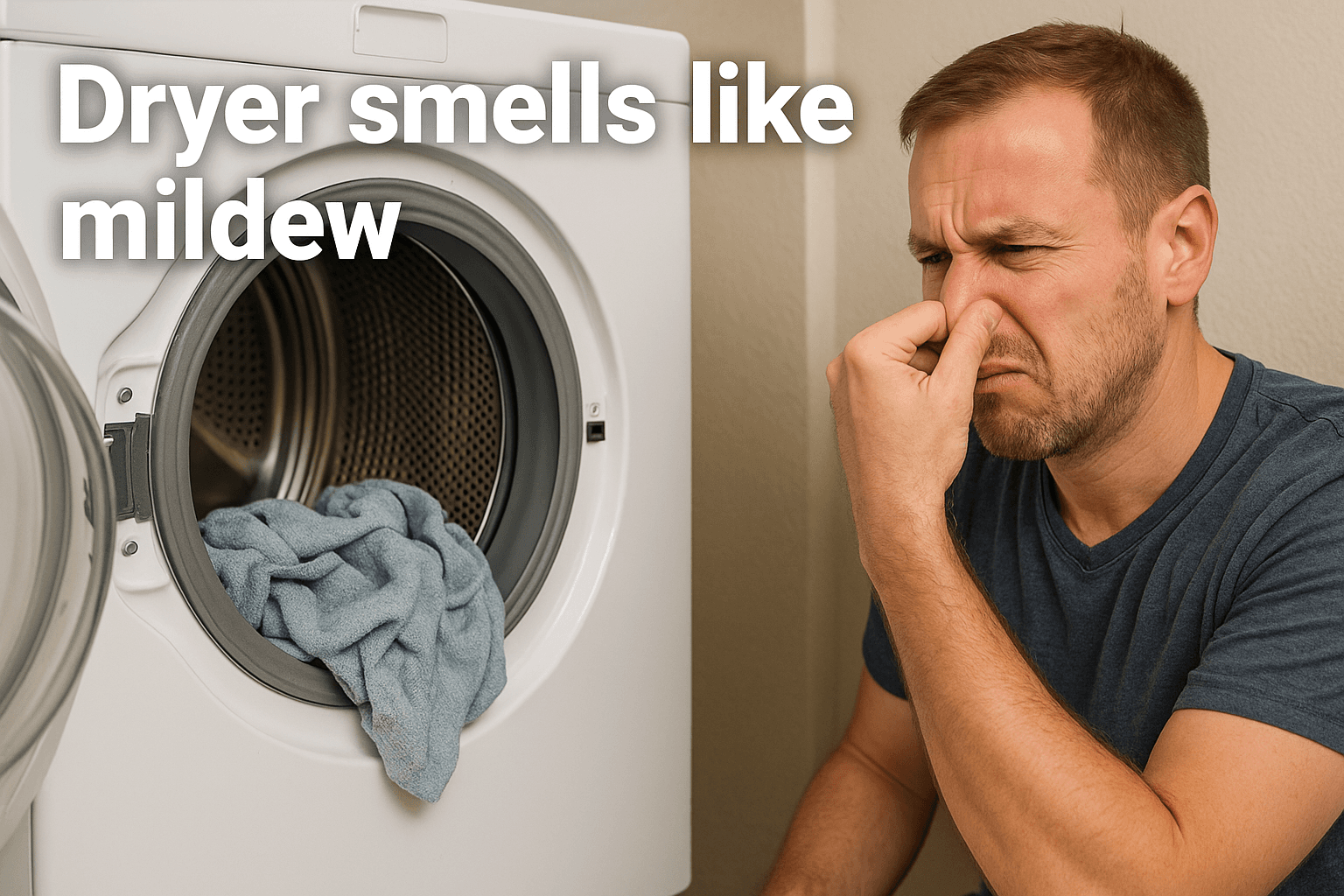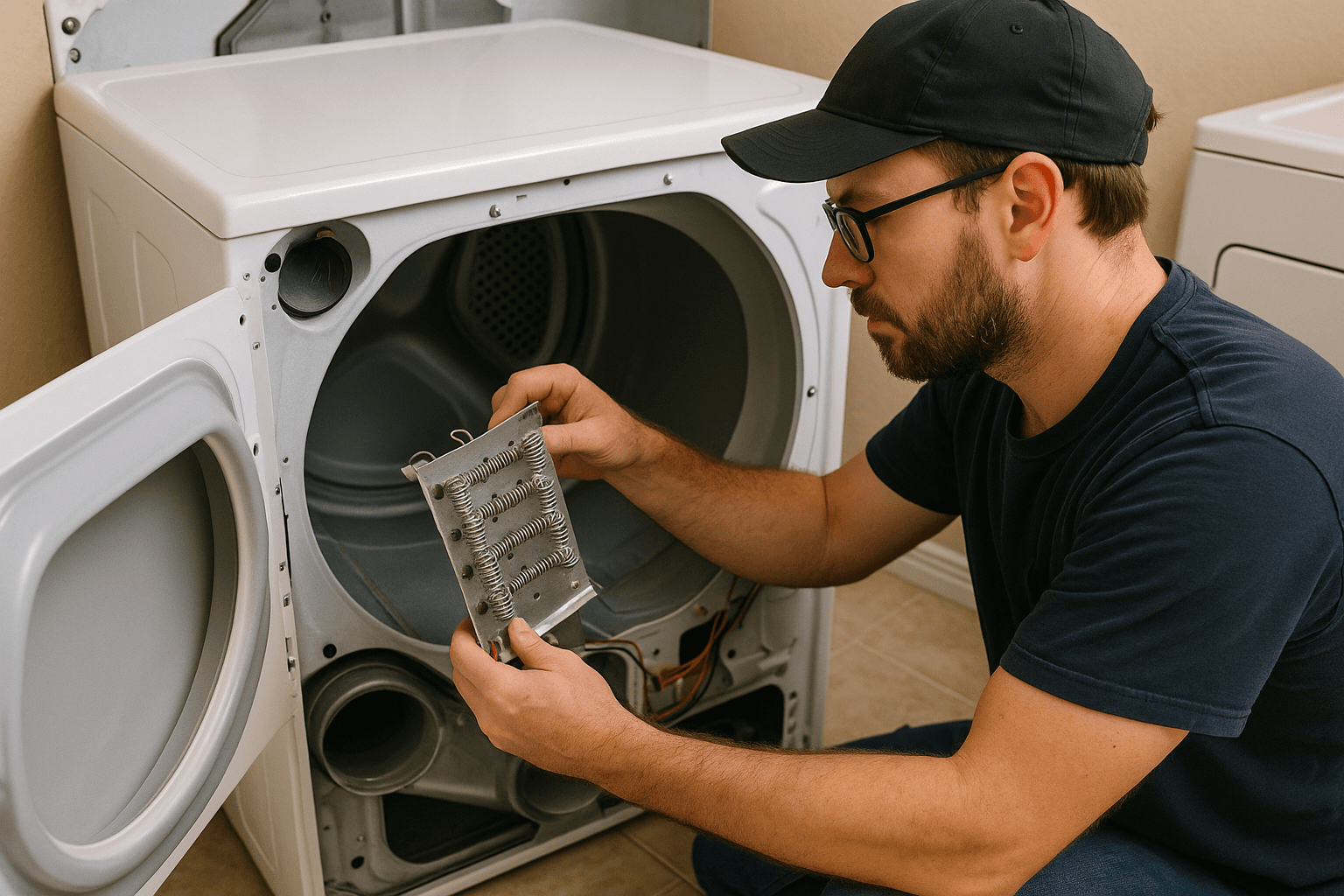How-To Guides
10 Dryer Vent Safety Tips to Avoid Dryer Fire
AZparts Team
Updated on December 4, 2025
8 min read
Dryer vent safety is often overlooked, yet it plays a crucial role in preventing house fires and ensuring efficient appliance performance. In this article, AZParts will walk you through the most common dryer vent hazards, key warning signs, essential dryer safety tips, and answers to common questions about dryer vent safety.
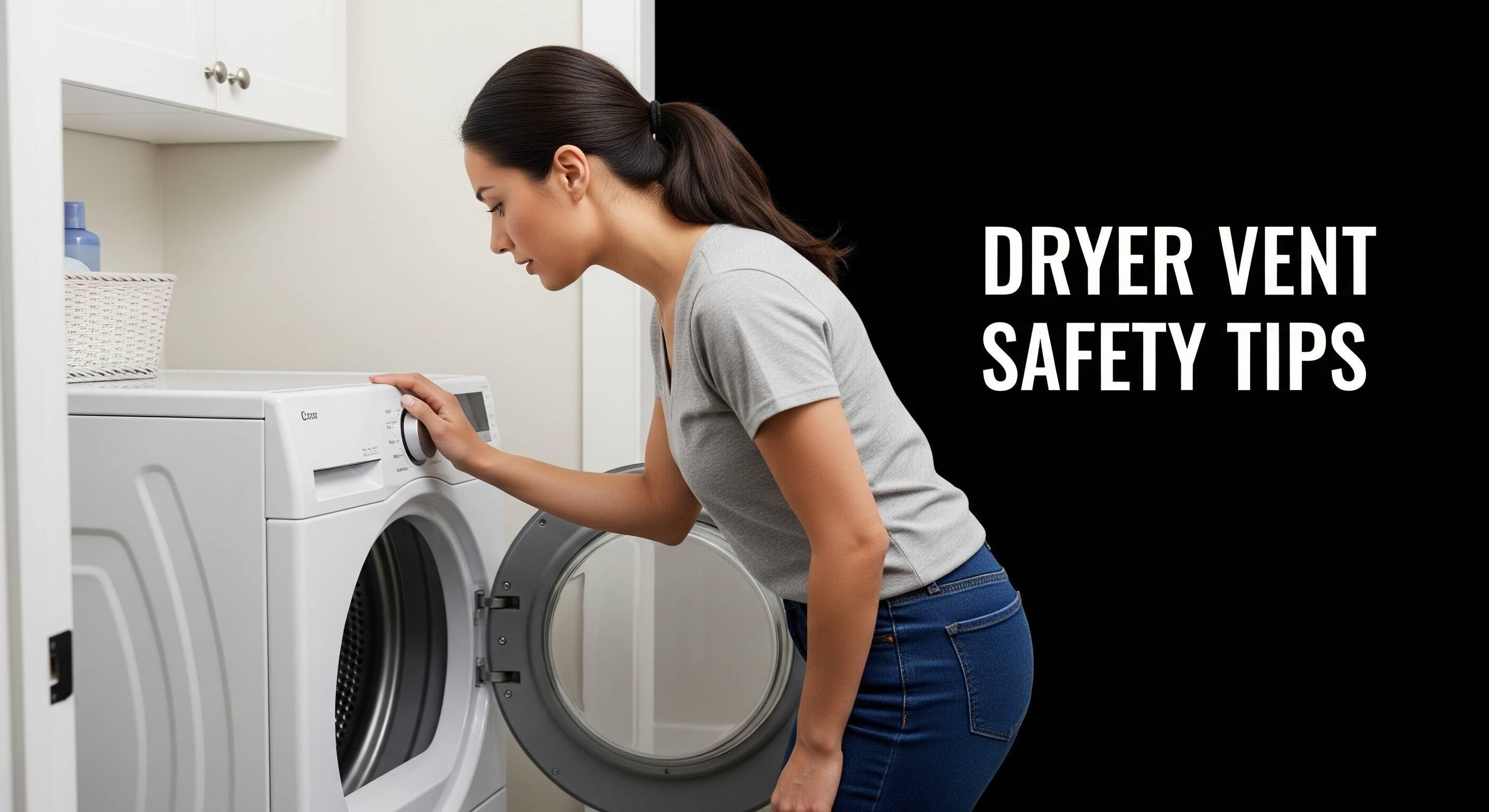
Tip | Key Action |
|---|---|
1. Clean Lint Trap | Clean before/after every load |
2. Clean Vent 6–12 Months | Inspect and clear lint buildup regularly |
3. Use Metal Ducts | Choose rigid or semi-rigid metal |
4. Keep Area Clear | Remove flammable items around dryer |
5. No Screens on Exterior Vent | Use proper exterior vent cover only |
6. Don’t Run Unattended | Stay home while dryer is operating |
7. Professional Maintenance | Schedule annual vent cleaning |
8. Avoid Foil/Plastic Ducts | Replace with metal ducting |
9. Vent Outdoors Only | Direct airflow outside, not indoors |
10. Educate Household | Teach dryer safety basics |
1. Common Dryer Vent Hazards
- Lint Buildup: Lint collects inside the vent and blocks airflow, causing the dryer to run longer, overheat, and increase the risk of fire.
- Crushed or Kinked Ducts: When the dryer is pushed too close to the wall, the duct can bend or collapse, restricting airflow and leading to overheating and leakage.
- Improper Venting Materials: Plastic or foil ducts trap lint and can’t handle high heat, making them more likely to melt or ignite.
- Long or Twisted Vent Runs: Excessive length or too many bends slows airflow, traps more lint, and raises the risk of overheating and fire.
2. Key Warning Signs of Unsafe Dryer Vents
During regular use, dryer vents can develop problems that often go unnoticed at first. Paying attention to early signs can help you catch issues before they become serious. Here are some common signals that your dryer vent may need attention:
2.1. Clothes Take Too Long to Dry
When a dryer takes more than one cycle to dry clothes, it’s often a sign of poor airflow. Lint buildup inside the vent can trap heat and moisture in the drum, making each load take much longer. This not only wastes energy but also puts extra stress on your dryer’s parts over time.
Read more: Reasons Your Dryer Isn’t Drying
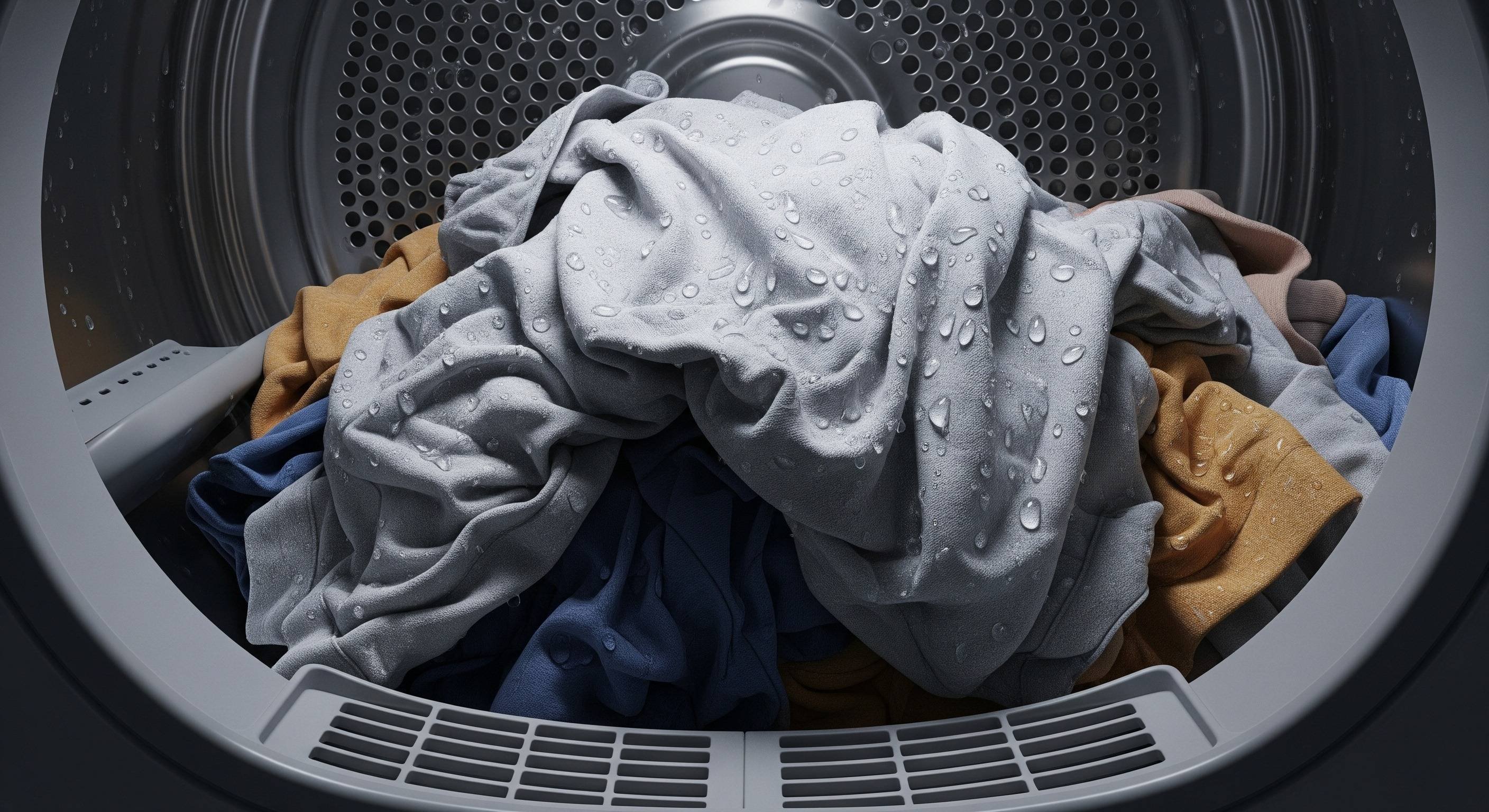
Dryer taking more than one cycle to dry clothes means poor airflow (Source: AZParts)
2.2. Dryer Feels Hot to the Touch
If the dryer feels unusually hot during or after a cycle, something may be blocking proper airflow. A clogged or congested vent can trap heat inside, making the exterior warm to the touch while clothes remain damp. Sometimes, the cause could also be a faulty part like the heating element or thermistor, which affects temperature control.
2.3. Burning Smell or Lint Around the Vent
A burning smell often means lint has overheated and may be starting to burn. You might also notice lint piling up around the vent or even blowing out of it. This buildup is a serious fire risk and shouldn't be ignored.
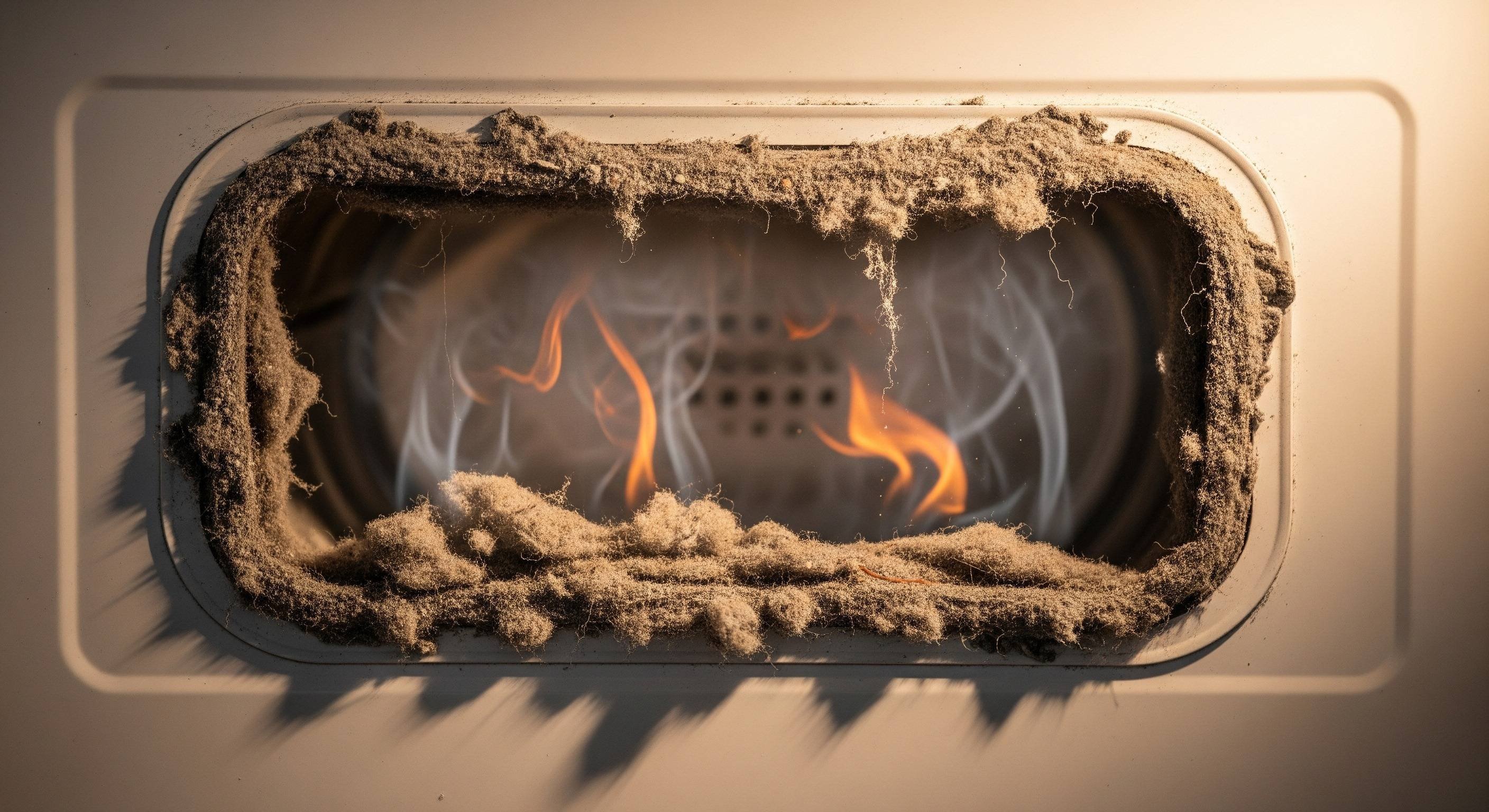
Overheated lint can lead to burning smell (Source: AZParts)
2.4. Excessive Humidity in Laundry Room
If your laundry room feels hot, damp, or stuffy after using the dryer, the vent might not be doing its job. When hot air can’t escape, it lingers in the room and builds up moisture. This is one of the clearest signs that something’s wrong with your dryer vent.
3. 10 Essential Dryer Vent Safety Tips
To keep your dryer running safely and efficiently, regular maintenance and a few simple habits go a long way. Here are 10 essential tips to help prevent dryer fires and other common issues:
3.1. Clean the Lint Trap After Every Load
Always clean the lint trap before and after each load. Lint builds up fast and can catch fire near the heating parts of the dryer. It only takes a few seconds and makes a big difference for safety. You can also wipe the inside of the drum to clear any extra lint. And never run the dryer without the lint trap in place, it’s there to protect you.
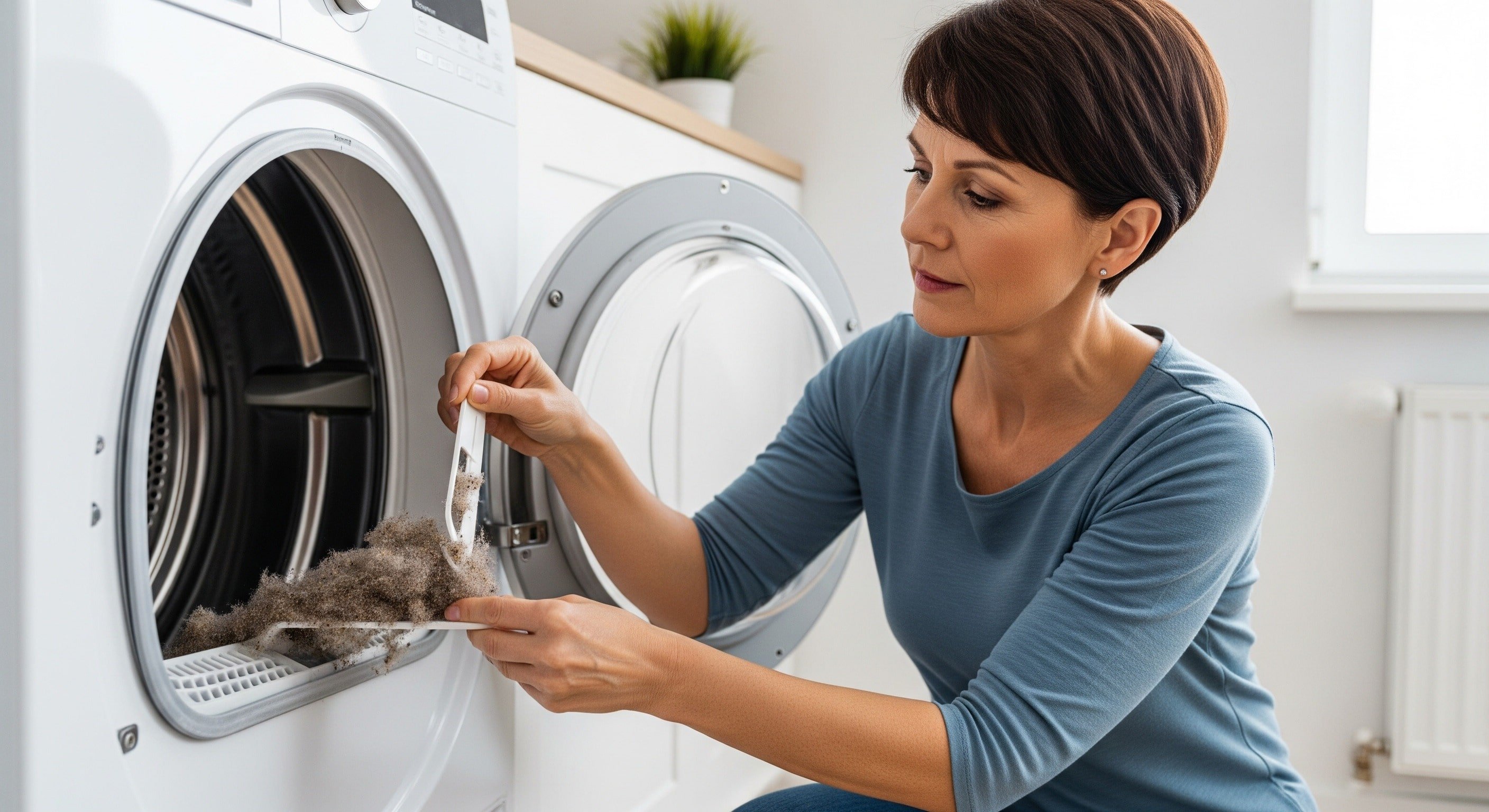
Clean the lint trap before and after each load help prevent lint buildup and fire risks (Source: AZParts)
3.2. Inspect and Clean Dryer Vent Regularly (Every 6–12 Months)
Make it a habit to inspect and clean your dryer vent every 6 to 12 months. Lint, dust, and debris can build up inside the vent, restricting airflow and increasing the risk of fire. If you notice that your vent hose, thermistor, or drive belt is worn out, damaged, or malfunctioning, it is important to replace it promptly. AZParts offers high quality replacement parts that are compatible with a wide range of dryer brands.
3.3. Use Rigid or Semi-Rigid Metal Ducts
For a safer setup, go with rigid or semi-rigid metal ducts. They let air flow better and don’t trap lint like foil or plastic ones do. Plus, they handle heat much better, which helps lower the risk of fire and keeps your dryer working more smoothly.
3.4. Keep Dryer Area Clear of Flammables
Make sure the space around your dryer stays free of anything flammable. Don’t dry clothes that still smell like gas or oil, even after washing, since the heat can make them catch fire. It’s also best to skip items with plastic or rubber parts, like some bathroom mats, because the heat can melt them and cause damage or a fire.
3.5. Avoid Using Screens on Exterior Vents
Don’t use a screen on the outside vent of your dryer. Lint can easily get stuck on it and block the airflow, which makes your dryer less efficient and raises the risk of fire. It’s safer to use a proper vent cover that lets air out but keeps bugs and debris from getting in.
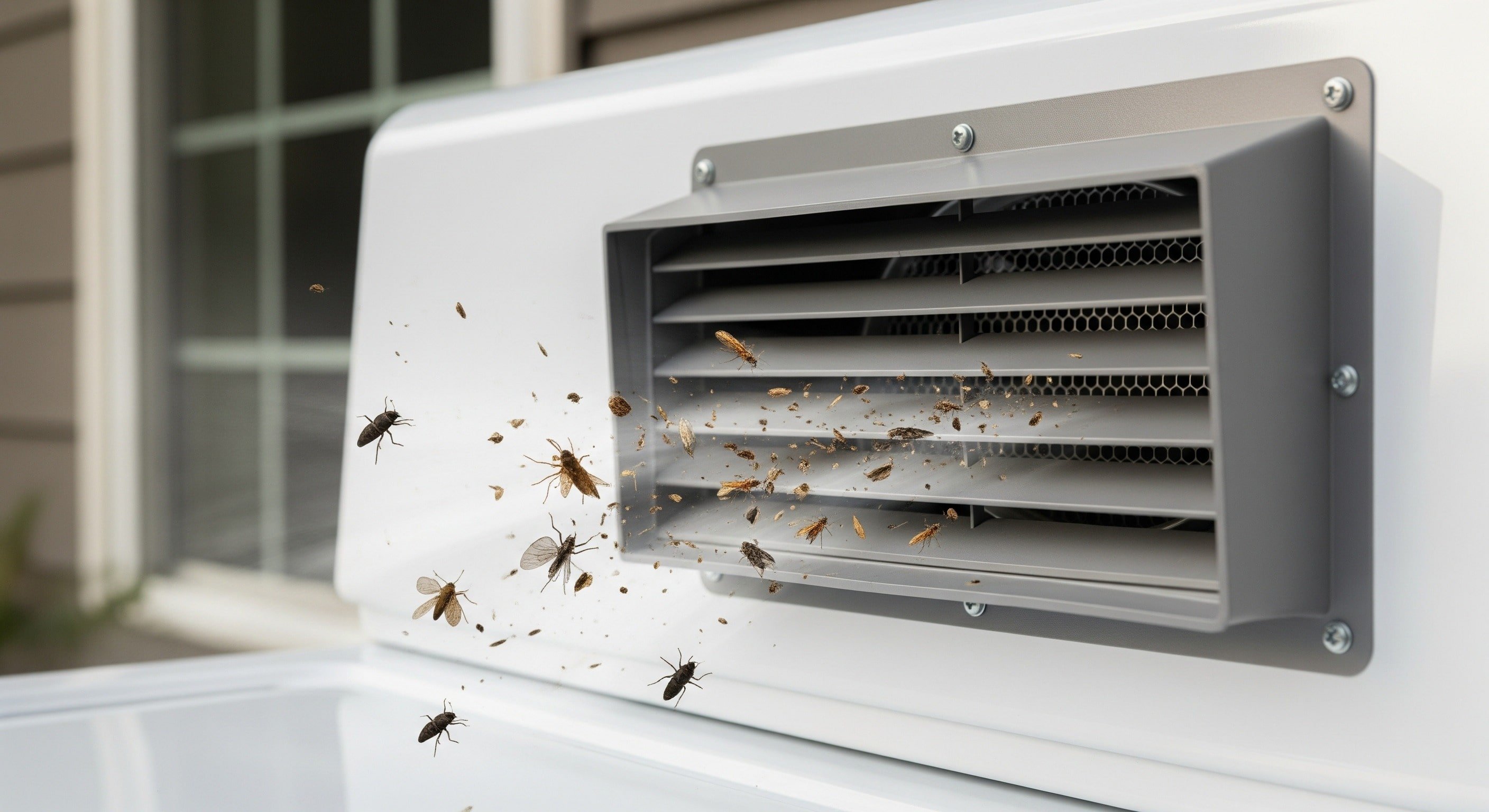
Using a proper vent cover can help keep bugs and debris from getting in (Source: AZParts)
3.6. Don't Leave Dryer Running Unattended
Always stay home while your dryer is running. Just like an oven, a dryer can be a fire risk if something goes wrong. It’s safer to keep an eye on it so you can catch any problems early and avoid serious damage.
3.7. Hire a Professional for Annual Maintenance
Getting your dryer vent professionally cleaned once a year is a smart move. Lint can build up deep inside the duct, especially in spots you can’t easily reach. This blocks airflow and makes your dryer overheat, which can lead to a fire. A pro can clear it out completely, helping your dryer run better and keeping your home safer.
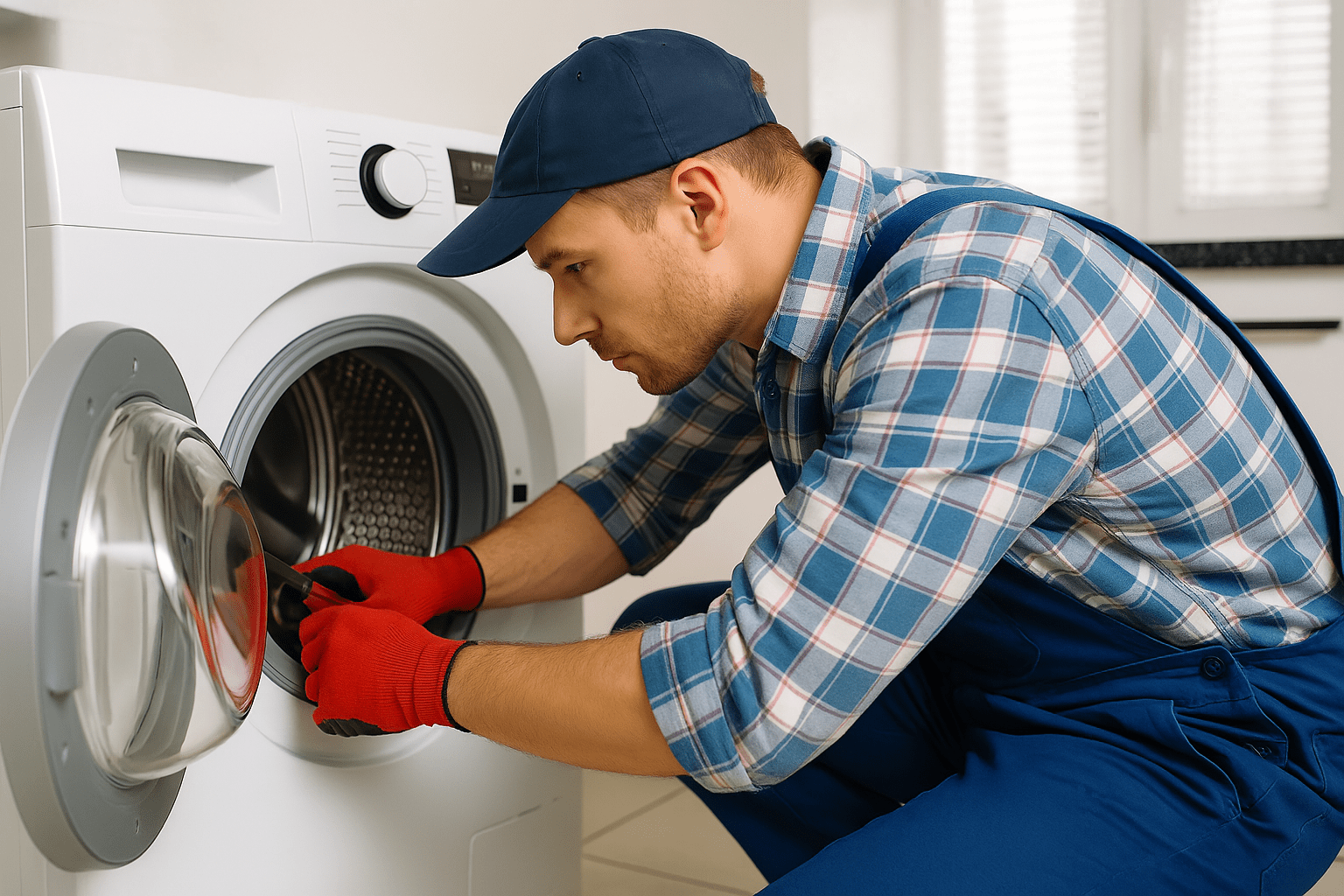
Hiring a professional for annual maintenance helps helping your dryer run better (Source: AZParts)
3.8. Don’t Use Foil or Plastic Ducting
Foil and plastic ducts might seem like easy options, but they’re not safe for dryers. They can sag, trap lint, and overheat easily, raising the risk of fire. Solid or semi-rigid metal ducts are a much better choice. They’re more durable, handle heat well, and help your dryer work more efficiently.
3.9. Ensure Proper Vent Outlet Placement (Outdoors Only)
Your dryer vent should always lead outside. Venting into an attic, crawl space, or garage might seem convenient, but it can cause moisture buildup, mold, and even fire risks. Sending hot air and lint outdoors keeps your home safer, drier, and your dryer running smoothly.
_11zon-min_1749526407.jpg)
Ensuring that your dryer vent should always lead outside prevents fire risks (Source: AZParts)
Check out more: How to Install Dryer Vent Hose with 6 Simple Steps
3.10. Educate Household Members on Dryer Safety
Make sure everyone at home knows the basics of dryer safety. Teach them to clean the lint trap, avoid overloading the dryer, and never dry flammable items. When everyone’s on the same page, it’s easier to prevent problems and keep your home safe.
4. FAQs about Dryer Vent Safety
4.1. What is the safest way to vent a dryer?
The safest way to vent a dryer is to use a short, straight metal duct that leads directly outside. This helps hot air and lint escape safely, keeps the dryer from overheating, and lowers the risk of fire. Avoid using plastic or foil ducts, and don’t vent into indoor spaces like attics or garages.
4.2. What is the code for venting a dryer?
The building code for venting a dryer (based on the International Residential Code - IRC) requires the vent to be made of smooth, rigid metal and lead directly outdoors. The total length should not exceed 35 feet, with reductions for bends. Flexible plastic or foil ducts are not allowed. Always check your local building codes, as they may have extra rules.
4.3. Is venting the dryer into the house safe?
No, venting a dryer into the house is not safe. It releases heat, moisture, and lint into your living space, which can lead to mold, poor air quality, and increased fire risk. Always vent your dryer directly outside to keep your home safe and dry.
4.4. What not to do when installing a dryer vent?
When installing a dryer vent, avoid using plastic or foil ducts because they trap lint and can easily catch fire. Don’t run the vent through indoor spaces like attics or garages, always vent outside. Stay away from long or twisted duct paths, which block airflow and make the dryer work harder. Also, don’t use screens on the outside vent, as they collect lint and cause clogs. Never crush or bend the duct, since this restricts airflow and raises the risk of overheating.
Keeping your dryer vent safe does not have to be complicated. Just a few simple habits and regular checkups can make a big difference. From clearing out lint to using the right ducting materials, each step helps reduce fire risks and improves your dryer’s performance. If dryer parts like the heating element, flame sensor, or door switch are old or damaged, it may be time for a replacement. AZParts offers high quality replacement parts compatible with a variety of dryer brands including Crosley dryer parts, Kelvinator dryer parts, and Kenmore dryer parts,... to help keep your appliances running safely and efficiently.
Contact Info
Address: 8 The Green, Ste A, Dover, Delaware 19901-3618, United States
Email: support@azparts.com
Read more:
Dryer
- 1. Common Dryer Vent Hazards
- 2. Key Warning Signs of Unsafe Dryer Vents
- 3. 10 Essential Dryer Vent Safety Tips
- 3.1. Clean the Lint Trap After Every Load
- 3.2. Inspect and Clean Dryer Vent Regularly (Every 6–12 Months)
- 3.3. Use Rigid or Semi-Rigid Metal Ducts
- 3.4. Keep Dryer Area Clear of Flammables
- 3.5. Avoid Using Screens on Exterior Vents
- 3.6. Don't Leave Dryer Running Unattended
- 3.7. Hire a Professional for Annual Maintenance
- 3.8. Don’t Use Foil or Plastic Ducting
- 3.9. Ensure Proper Vent Outlet Placement (Outdoors Only)
- 3.10. Educate Household Members on Dryer Safety
- 4. FAQs about Dryer Vent Safety
Further Reading
Further Reading

